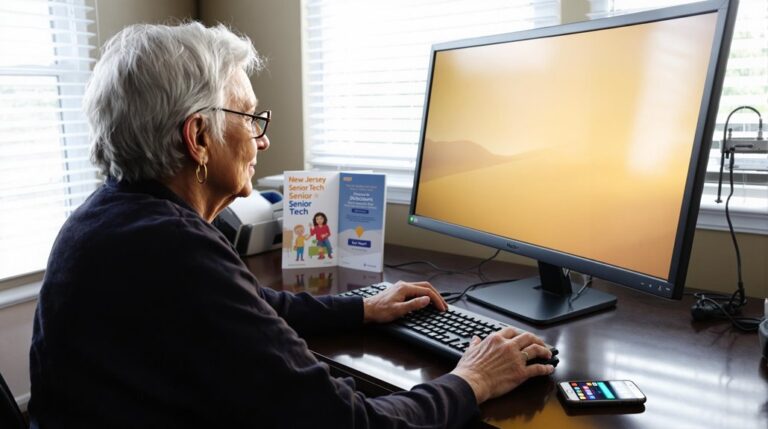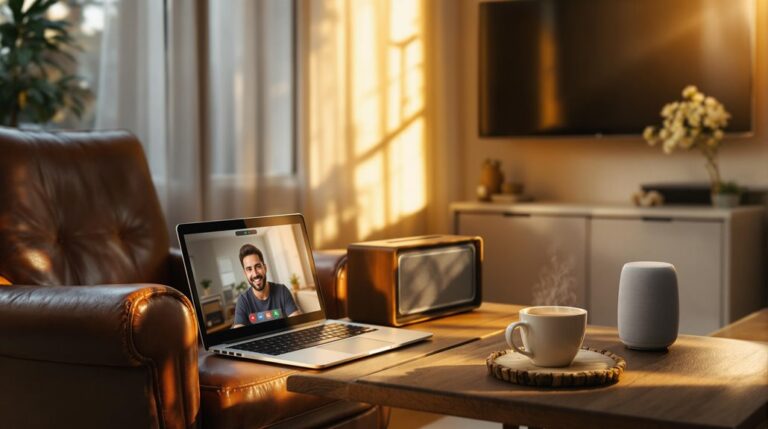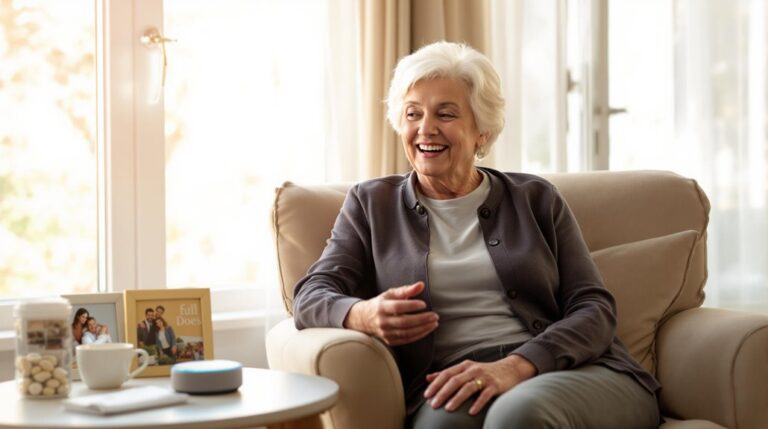The integration of technology into senior care has revolutionized how older adults maintain independence at home. From smart sensors that detect falls to AI-powered medication reminders, these innovations provide unprecedented levels of safety and support. Modern solutions now bridge the gap between aging in place and extensive care, offering seniors and their families peace of mind through real-time monitoring and automated assistance. The expanding array of available technologies presents multiple pathways to enhance senior living quality.
Key Takeaways
- Smart home safety features like motion sensors and automated lighting prevent falls and monitor seniors’ well-being in real-time.
- Voice-activated assistants enable hands-free control of home environments and provide medication reminders for older adults.
- Wearable devices track vital signs and automatically detect falls, offering immediate emergency response through integrated alert systems.
- Remote healthcare services connect seniors with medical providers through telemedicine and virtual consultations from home.
- Social connectivity platforms and digital tools help seniors maintain family relationships and combat isolation while aging in place.
Smart Home Safety Features That Protect Aging Adults
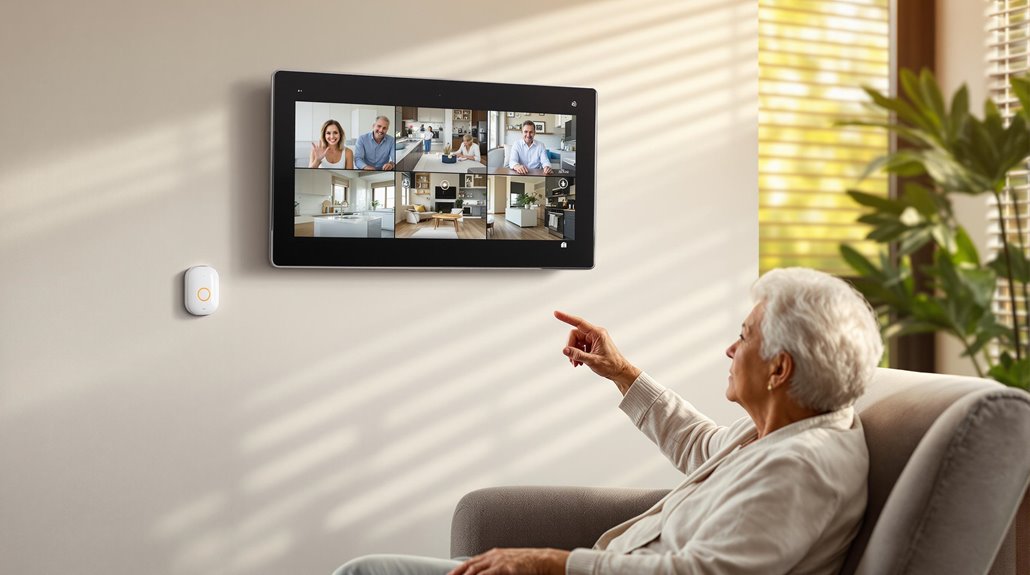
Countless aging adults are discovering enhanced safety and autonomy through smart home technology designed specifically for their needs.
Modern smart home integration combines sophisticated motion sensors, voice-activated emergency systems, and predictive algorithms to create thorough safety monitoring solutions. These systems can detect falls, analyze movement patterns, and automatically alert caregivers or emergency services when necessary.
Advanced home safety features include automated stove shut-off mechanisms, smart lighting that adjusts to prevent tripping hazards, and AI-enabled security cameras that protect privacy while monitoring for concerning situations.
Research indicates that over half of homeowners aged 50 and above have embraced these technologies, recognizing their value in maintaining independence.
With biometric locks, leak detection sensors, and contactless monitoring systems, seniors can feel secure while preserving their dignity and autonomy.
Wearable Devices for Senior Health Monitoring
While wearable health monitoring devices offer crucial potential for improving senior healthcare outcomes, current adoption rates reveal concerning disparities among older adults. Income levels and technological literacy greatly influence adoption, with higher-income seniors being four times more likely to utilize these potentially life-saving tools.
Unequal access to wearable health technology creates a dangerous divide, leaving many seniors without vital monitoring tools they desperately need.
Key benefits of wearable technology for senior health monitoring include:
- Real-time tracking of essential signs for early detection of health issues
- Automated fall detection and emergency alert capabilities
- Continuous activity monitoring to encourage physical mobility
- Direct data sharing with healthcare providers for improved care coordination
- Early warning systems for critical conditions like arrhythmias
Despite these advantages, only 12% of seniors with cardiovascular disease currently use wearables, highlighting the need for improved accessibility and simplified interfaces to bridge the technological divide.
Voice-Activated Assistants and Home Automation
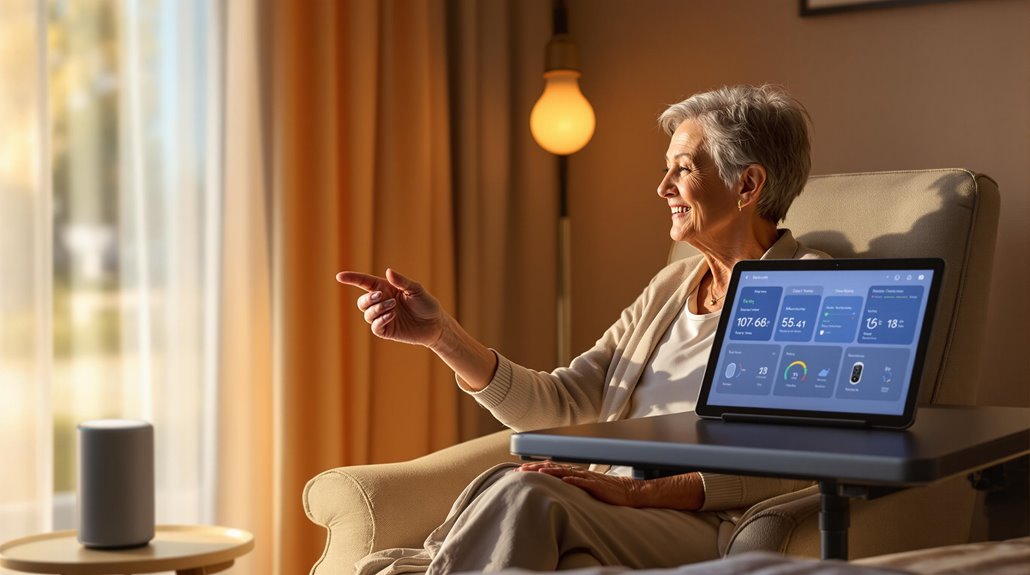
Voice-activated assistants represent another advancement in senior care technology, offering hands-free control and support for older adults who may struggle with traditional interfaces. Through voice interaction, these systems enable seniors to manage their environment, from adjusting thermostats to controlling lights, without requiring physical dexterity.
The user experience extends beyond home automation, addressing social isolation through companionship features and supporting healthcare management with medication reminders and appointment scheduling.
These assistants serve eight key domains, including administrative support, emergency communication, and entertainment. While privacy considerations currently limit personalization features, platforms like Alexa Smart Properties are being deployed in senior living facilities with preconfigured setups.
Despite adoption challenges among older demographics, voice-activated technology continues to evolve, promising enhanced independence and safety for aging adults.
Remote Healthcare Options Through Telemedicine
As healthcare delivery continues to evolve in the digital age, telemedicine has emerged as a transformative solution for seniors seeking accessible medical care from the comfort of their homes.
This technology offers substantial telehealth benefits, particularly for those with mobility challenges or those living in remote areas.
- Virtual consultations connect patients with healthcare providers through secure video platforms
- Remote monitoring systems track essential signs and chronic conditions in real-time
- AI-powered diagnostic tools enhance accuracy during digital appointments
- Simplified interfaces accommodate varying levels of technical proficiency
- Integration with wearable devices enables continuous health tracking
The adoption of telemedicine among seniors has shown remarkable growth, with over 43% of patients aged 65 and older embracing these services.
Seniors are rapidly integrating telemedicine into their healthcare routines, with nearly half now using virtual medical services.
This surge reflects the increasing confidence in virtual healthcare solutions and their effectiveness in managing ongoing medical needs.
AI-Powered Medication Management Systems
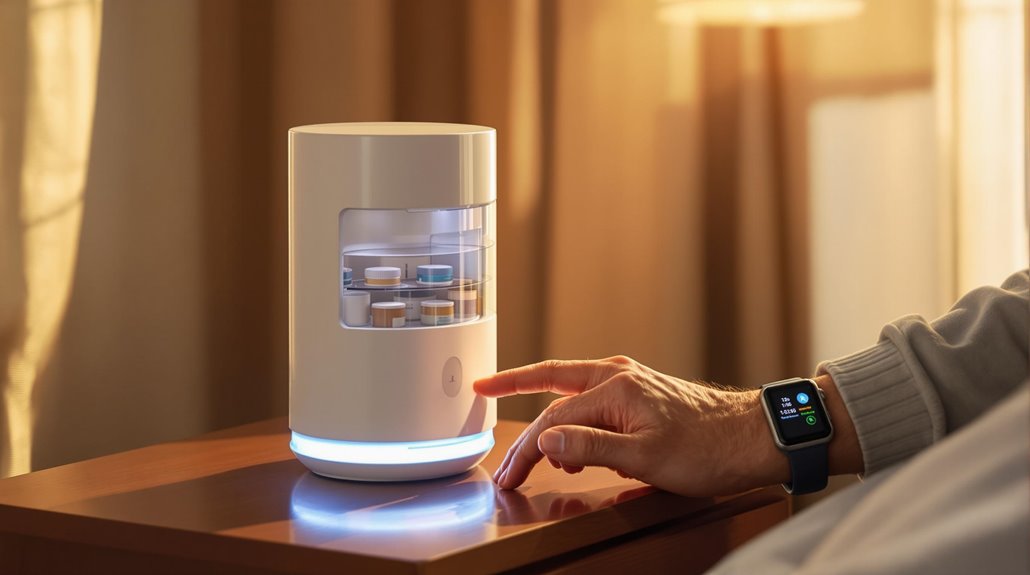
To enhance medication compliance and safety among seniors, AI-powered medication management systems have revolutionized how elderly individuals track and maintain their prescription regimens.
These sophisticated systems utilize AI adherence tracking to analyze usage patterns and automatically generate personalized medication schedules based on each patient’s specific health status. Through continuous medication interaction monitoring, the technology can detect potential adverse drug combinations and alert caregivers in real-time.
The systems integrate with electronic health records and employ machine learning to predict health risks, while automated reminders through voice assistants and mobile apps guarantee proper dosing.
This technology has proven particularly effective in reducing healthcare costs by identifying unnecessary prescriptions and minimizing polypharmacy risks, making it an invaluable tool for both seniors and their caregivers.
Fall Prevention and Emergency Response Technology
Modern fall prevention and emergency response technologies represent critical advancements in protecting seniors’ safety and independence at home. Integrated systems combine sophisticated fall detection sensors with rapid emergency alerts to create extensive safety networks for aging adults. These technologies leverage artificial intelligence and IoT connectivity to monitor movement patterns and respond to potential emergencies.
Smart home technologies and AI-powered sensors work together to protect seniors, enabling both independence and rapid emergency response.
Key components of modern fall prevention systems include:
- Motion-sensing lights that automatically illuminate paths to reduce nighttime falls
- Wearable devices with accelerometer-based fall detection and GPS tracking
- Smart home platforms that analyze daily activity patterns and alert caregivers
- Medical alert systems providing 24/7 emergency response capabilities
- Multi-sensor networks that combine floor mats, cameras, and wearables for complete coverage
These innovations enable seniors to maintain independence while ensuring quick assistance when needed.
Connected Care Platforms for Family Coordination

Connected care platforms have revolutionized how families coordinate senior care through extensive digital ecosystems that unite healthcare providers, caregivers, and loved ones. These integrated systems enable direct sharing of patient health information, facilitating real-time communication and decision-making among all parties involved in care delivery.
Family health integration features allow relatives to monitor their senior family members’ conditions remotely, while caregiver communication tools streamline coordination between professional care providers and family members.
The platforms support thorough care management by connecting patients with specialists for virtual consultations and enabling remote diagnosis capabilities. Through standardized protocols and digital coordination, these systems have greatly improved care shifts between facilities and home settings, leading to better outcomes and more efficient resource allocation while keeping families informed and engaged throughout the care journey.
Predictive Analytics for Proactive Senior Care
As healthcare providers work to enhance senior care outcomes, predictive analytics has emerged as a transformative force in proactive healthcare delivery for the elderly population. Through advanced predictive modeling and health forecasting techniques, caregivers can now anticipate and address potential health issues before they become critical.
Key applications of predictive analytics in senior care include:
- Early detection of chronic conditions through analysis of essential signs and medical history
- Dynamic staffing adjustments based on projected care demands
- Prevention of falls through mobility pattern analysis and environmental risk assessment
- Personalized care plan optimization using real-time health metrics
- Cost reduction through proactive interventions that minimize emergency room visits
This data-driven approach enables caregivers to deliver more efficient, personalized care while markedly reducing healthcare costs and improving overall patient outcomes.
Digital Tools for Daily Living Assistance
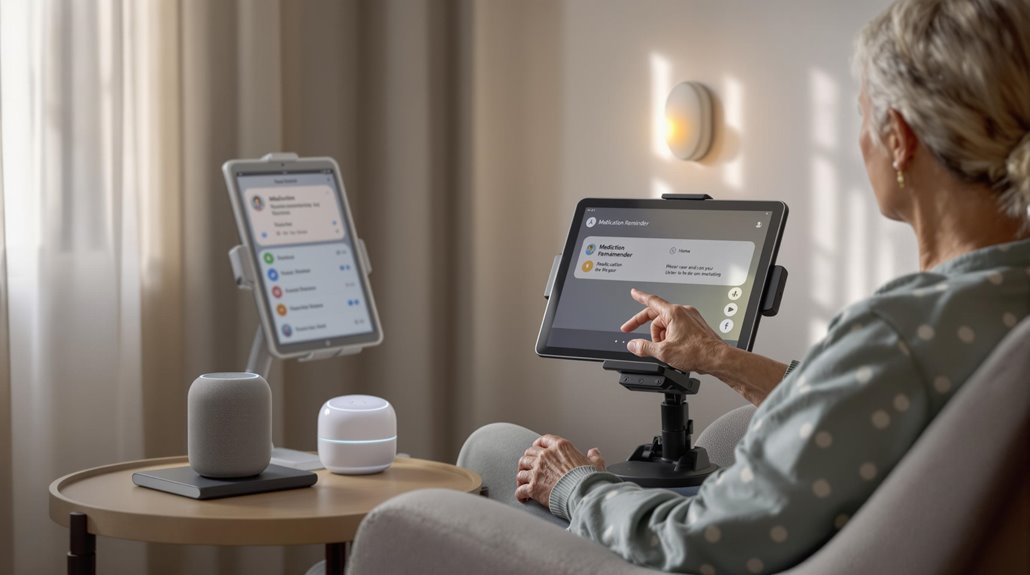
Building upon advances in predictive healthcare analytics, digital tools for daily living assistance now stand at the forefront of enabling seniors to maintain independence and quality of life at home.
Smart home technologies, including voice-controlled assistants and automated medication systems, facilitate easier daily task management for older adults, with 35% already utilizing these solutions.
While digital engagement through smartphones and tablets reaches 91% of seniors, accessibility challenges persist, particularly among marginalized communities where only 11% of Black older adults engage with digital health technologies.
Remote caregiving tools, including GPS trackers and emergency alert systems, provide essential support for the 27% of older adults serving as caregivers, while social connectivity platforms help combat isolation through virtual community participation and family connections.
Cost-Effective Tech Solutions for Aging in Place
While aging in place remains a primary goal for many older adults, innovative and budget-conscious technology solutions have emerged to make independent living more accessible and safer.
Affordable tech solutions now integrate seamlessly into daily routines, providing thorough in-home support without overwhelming costs. Modern systems combine essential monitoring capabilities with user-friendly interfaces, creating an effective safety net for seniors and their caregivers.
Today’s accessible technology empowers seniors to live independently while giving caregivers peace of mind through simple, cost-effective monitoring solutions.
- Wi-Fi-based movement detection systems eliminate the need for expensive sensor installations
- Voice-controlled smart home devices manage lighting, thermostats, and security features
- Basic medical alert pendants provide emergency assistance at an accessible price point
- Medication management apps offer free or low-cost reminder systems
- Entry-level wearables include essential health monitoring and fall detection features
Bottom Line
Modern technology continues to revolutionize senior care, offering extensive solutions that enhance independence and safety while aging in place. From smart home features and wearable devices to telemedicine platforms and AI-powered systems, these innovations provide seamless support for both seniors and caregivers. As technology advances, the future of in-home elder care promises even more sophisticated, integrated solutions that will further improve quality of life and healthcare outcomes.
